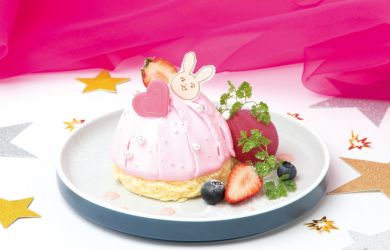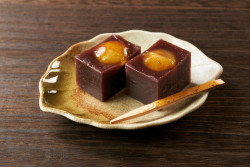
September 24, 2009
Someno Collection
Slapdash ceramics stir the mind at the National Museum of Modern Art
By Metropolis
Originally published on metropolis.co.jp on September 2009

Mineo Okabe, Beni-shino-style jar, stoneware, 1965, h. 25.5 cm
Many people who aspire to be artists fail to hit the mark, while others with no such ambition can unwittingly succeed in achieving true artistry. This paradox is nowhere more evident than at a top-level crafts exhibition, like “Mr. and Mrs. Someno’s Ceramics Collection,” now on at the National Museum of Modern Art’s Craft Gallery.
With around 200 pieces collected by the late law professor Yoshinobu Someno and his wife over several decades, the show features ceramics by several well-known potters. Although most of them produced aesthetically stunning work and some of them even received grandiloquent titles like “Living National Treasure,” for the most part, they prided themselves on being simple craftsmen rather than artists.
But even “prided,” with its connotations of self-conscious achievement, is the wrong word. The appeal of many of these works is what Someno called their lack of “ostentatious nonsense.” A good example of the collector’s taste is a square dish with a reddish brown glaze by Shoji Hamada. This has a wonderfully loose, almost random splotch of design in colored enamels, which seems to have been daubed on sometime in the production process with nary a conscious thought.

Arakawa Toyozo, Choyo, tea bowl, Mino ware, Shino type, 1969, d. 12.8cm
It is this nonchalant, laidback attitude that’s so refreshing and artistically cool. But such playful insouciance is only allowable because Hamada was an accomplished craftsman with a deep understanding of every stage of the complex pottery process. On its own, this kind of slapdash approach would simply be puerile and irritating, but on an elegantly made, well proportioned, well fired piece of crockery, it is instead a breath of fresh air.
A similar spirit can be found in Inochi-no-kaika (2003), a Hagi ware chawan (tea bowl) with a notched foot, made by the then 93-year-old Jusetsu Miwa, the 11th master in a potting dynasty that stretches back hundreds of years.
Hagi ware takes its name from a city in Western Japan, a center of pottery since captive Korean craftsmen were resettled there following Japanese invasions of their homeland in the late 16th century. Associated with the tea ceremony, it strives for a rustic simplicity, emitting warmth and a sense of the clay from which it is made. A key feature is the cracks in the glazing that allow it to become encrusted with tea stains over time, gradually changing color. This is achieved by the uneven application of the glaze, shrinkage of the item during firing, and the turbulent air currents within the kiln.

Miwa Jusetsu, Inochi-no-kaika, tea bowl with notched foot, Hagi ware, Oni-hagi type, 2003. d. 16 x 15.3cm
Rather than shaping and controlling the process, the craftsman has an instinct about what may happen and allows the processes and materials to speak for themselves. The result is often dependent on lucky accidents.
Inochi-no-kaika is an example of oni-hagi (“devil Hagi”), a wilder style pioneered by Miwa that is considered aggressive in its flouting of convention, but in fact brings the spirit of Hagi ware to its logical conclusion.
In other countries, ceramics this rough, rude and lopsided would be considered a lot less than perfect (and probably unhygienic too), but in Japan they are greatly appreciated. This is because, unlike more perfect productions, they reveal exactly what they are—glazed clay objects made by hand and fire for drinking tea—rather than hiding under a clean finished surface. Also, the random patterns that appear lend themselves to reflection and stimulate the imagination. Someno, in a 1986 essay, eloquently captured the power of such homely objects to stir visions.
“In Kusetsu’s new work,” he wrote, “one can see clouds through which a dragon flies up to the sky, or warm earth showing through gaps where spring snow melts, or perhaps torrents of water rushing down a valley, cutting through rocks. It’s as though we hear Stravinsky’s ‘Rite of Spring.’”

Hamada Shoji, square dish, red and green enamels on reddish-brown glaze, 1970, 32.1 x 32.0cm
The National Museum of Modern Art, Craft & Design
Bernard Leach, Hamada Shoji, Arakawa Toyozo and Miwa Jusetsu: From Mr. & Mrs. Someno’s Ceramics Collection. Until Nov 3, free (HS and under, 65 and over)/¥70 (univ)/¥200 (general). 1-1 Kitanomaru Park, Chiyoda-ku. Tel: 03-5777-8600 (Hello Dial). Open Tue-Sun 10am-5pm, closed Mon. Nearest stn: Takebashi, exit 1B. www.momat.go.jp







